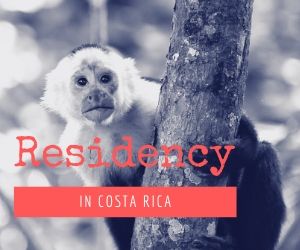Interesting topic and I've also wondered where the freshest air would be in SJO, isn't in the gulch that's for sure.

Latinoheat described it as being in one of the unhealthiest environments on the planet as we walked by all the buses on the way to Mas x Menos. Since the prevailing winds are from the NE, I would guess the air would be better in Barrio Amon than say San Pedro or Zapote, or better in Heredia and Santa Ana than Tres Rios or Cartago but with the differences in altitudes and wind patterns this logic may not apply. Did that article you saw have detailed results of air quality and the locations?
Some climate info-
Quote:
Climate: Costa Rica's weather is influenced by many factors, as is weather everywhere, although perhaps two of the most important factors are the fairly even amount of solar radiation received throughout the year and the prevailing northeasterly winds, known as the trade winds.
Situated at just ten degrees latitude north of the equator, this tropical nation receives sunlight from a nearly overhead angle year-round and day length does not vary more than an hour either way from 12-hours of daylight. This means that annual temperatures remain quite constant for any particular place in the country at a given hour. In other words, the temperature in San José, say, at noon averages 25.5º C in June and 23.5º C in December-hardly a significant difference. During any 24-hour period there is a somewhat greater range of temperatures experienced between the daily high and low, although this, too, at an average of about 8º C, is relatively small compared to many temperate zone areas.
With more or less constant temperatures found at any given location, the most important variable in annual weather patterns becomes precipitation.
Rainfall in Costa Rica results from the interaction of the trade winds with local topography. When moisture-laden air coming in off the Caribbean Sea encounters the coastline, the difference in surface temperature between the land and the water can often trigger showers. Moving further inland the air reaches the eastern foothills of the country's mountainous backbone. As the air mass rises to pass over the barrier, it cools, and because cool air can hold less moisture than warm air, it rains, causing the middle elevations of the Caribbean-facing slopes to be the wettest areas in the country with average annual precipitation of more than 4000 mm.
Even though rainfall is fairly evenly distributed throughout the year on the eastern side of the cordilleras, there is a noticeably drier period from January through April and a peak in precipitation from June through August and again in November and December. It's best to be prepared for rain any day of the year on the Caribbean side of Costa Rica, unlike the situation that occurs on the other side of the mountains.
From mid-November through mid-May (on average) the Central Valley and the northwestern portion of the country are affected by an annual dry season. The warm moist air driven westward by the trade winds loses its moisture as it crosses the cordilleras (as described above) and the resulting dry air gusts down the Pacific slopes drying out everything in its path. With such low moisture content, few clouds form to block the sunshine and the prevailing winds keep Pacific breezes from bringing moisture onshore, thus, further promoting the dryness.
The southern half of the Pacific slope is not normally as strongly influenced by these effects owing to the fact that the height of the Talamanca mountain range blocks the drying winds to some degree, which allows moisture to be brought in from the Pacific Ocean, causing occasional showers even in the dry season.
As the trade wind belt moves northward in response to global climatic conditions (principally, the angle of the sun and area of greatest surface heating), Costa Rica enters its rainy season as moist air flows in from both oceans and convection currents cause showers to occur. Regional weather conditions, such as tropical waves, tropical depressions, and even hurricanes farther north and east in the Caribbean, can greatly affect precipitation levels here. The first two atmospheric phenomena usually bring increased rainfall to the eastern side of the country when they pass through the western portion of the Caribbean Sea. Distant hurricanes (fortunately these major storms almost never reach Costa Rica -- one hit south of Limón in 1910) can result in what are known here as temporales del PacÃfico. These are rainy periods lasting two days or more when air from the Pacific, being drawn in continuously towards the extreme low pressure center out in the Caribbean, is backed up against the Pacific-facing slopes of the cordilleras and drops its moisture.
The annual differences in rainfall from one part of the country to another, together with the change in average temperature from warm to cool as one moves from sea level up into the mountains, are the basis for the variety of life zones (tropical dry forest, tropical wet forest, premontane rain forest, etc.) that exist in Costa Rica, and also are intimately linked with such biological events as flowering and fruiting of plants and breeding and migration of animals.
Formaldehyde in new homes isn't talked about much but is a big issue IMO. A friend built a new home and went cheap on the plywood buying chinese import, the formaldehyde released from the glue was so strong in the summer heat the trim carpenters eventually refused to work with it and left the job for a week until the house aired out. I went in there during construction and was shocked how bad it was, it choked me in smaller rooms like the closets and bathrooms. Once the plywood was primed and painted it sealed it and wasn't as bad but paint and carpet also release it. In fact pretty much everything in a new house from the wood procducts, paint and glues to the carpets, new furniture and drapes release formaldehyde and other fumes. A new house could literally make you sick, look what's happening with the Katrina FEMA trailers. I don't know the answer to your question but it does diminish over time with ventilation, I read someplace a recommendation to first let certain products off-gas: leave them outside the home for several days before installation to reduce the amounts released inside.










